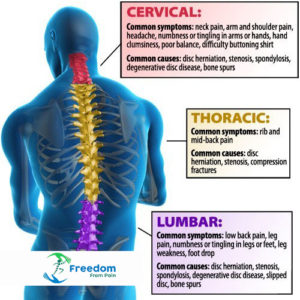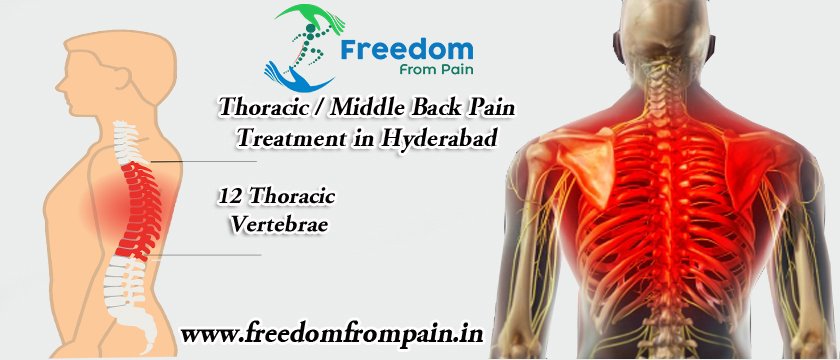The thoracic region of your back, (upper-middle or middle back), can ache for a variety of reasons. Typically, middle back pain is not a result of a more serious spinal issue. Middle back pain can be caused, however, by a number of daily activities or more serious conditions or diseases.
Statistics on Thoracic Back Pain (Upper Vertebral Fractures/Pain)
Thoracic back pain is common in people of all ages, mostly due to poor posture or heavy lifting affecting the joints between the vertebrae and ribs. The other conditions affecting the thoracic spine tend to be different from the ones affecting the lumbar spine.
Risk Factors for Thoracic Back Pain (Upper Vertebral Fractures/Pain)
The most common cause is
- muscular and ligamentous strains (mainly postural).
- Vertebral dysfunction
Seek emergency treatment if back pain is accompanied by:
- Weakness in your arms
- Loss of control of your bladder or bowels
- Numbness or tingling in your chest or arms
- Unexplained loss of weight
- Fever and chills
- Bacterial infection

The medical conditions that can cause mid-back pain include:
- Pulled back muscle
- Pinched nerve
- Myofascial pain syndrome
- A compression fracture
- A herniated disc
- Osteoarthritis
- Osteoporosis
- A bulging disc
- Thoracic spondylosis
- Thoracic Sprain
- Thoracic Facet Syndrome
- Thoracic Degenerative Joint Disease
- Thoracic Degenerative Disc Disease
- Thoracic Radiculopathy
Other factors that can cause middle back pain include:
- A back injury, such as a slipped disc or a sprain
- Poor posture
- Prolonged sitting at a desk
- Overuse of specific muscles and ligaments
- Repetitive movements at your job or in a sport
- Back muscle atrophy
- Wearing a backpack for long periods of time
- Sports injuries
- Trauma from a car accident or fall
- Jobs that require frequent heavy lifting
Treatment of Thoracic Back Pain (Upper Vertebral Fractures/Pain)
- Vertebral dysfunction is treated with simple analgesics for painful episodes, appropriate exercises (after consultation with physiotherapist) and spinal mobilisation.
- Treatment for Scheuermann’s disorder involves extension exercises, postural correction, and consideration for bracing or surgery if serious deformity.
- Treatment for scoliosis may involve bracing until skeletal maturity is reached (this will only halt the process), or surgical correction for more severe curvatures.
- Osteoporosis- can be treated with general measures (alter diet, stop smoking, alcohol), calcium supplementation, and medications such as Vitamin D, bisphosphonates, and oestrogen replacement) see topic under ‘bone’ medical centre for more detail.


